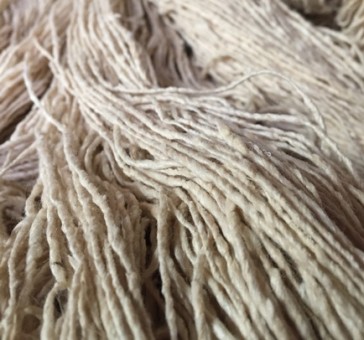Bhang: “hemp” in Nepalese
The word "Bhangara" sums up the intention of our brand: to highlight the know-how of Nepalese hemp. All our accessories are handmade, according to the traditional cultivation, retting, spinning and weaving techniques of Nepal.
A natural and ecological material such as hemp offers so many advantages...
Why keep using synthetic materials?


A local culture respectful of the environment and people
Hemp, originally from Asia, is naturally present in the regions of Bajhang and Bajura, in the west of Nepal. Adapted to the local climatic conditions, this amazing plant is free of parasites and prevents the growth of weeds. Choosing hemp means opting for a crop free of pesticides and herbicides, which preserves both the health of farmers and the Himalayan environment.
Hemp is naturally present
in the regions of Bajhang and Bajura, in the west of Nepal. The locals have harvested hemp since ancient times.

From seeds to hemp fiber
The hemp is sown in February or March and harvested in September and October. The hemp fibres are first dried. Then comes retting, the maceration stage facilitating to separate the bark from the stem of the plant. This is done in a pit where cow excrement is used to speed up the putrefaction of the organic matter and its separation from the fibre. Nature at the service of nature, in short.


The last stage: scutching, or defibration, allows the textile fibres of the hurds (woody part of the plant) to be separated by beating, to obtain tows 70 to 80 cm long. At the time, this work was done by hand.

Spinning and weaving of hemp
The healthy and ecological weaving process of hemp does not make it a simple material to produce. On the contrary, it requires know-how and expertise. Judge for yourself:

- The hemp is spun by village women in the mountains.
- Weaving is done on a loom that fits the belt. It allows to weave rolls of fabric up to a maximum length of about 3 metres. The result? An ultra-quality, very dense and tight weave. It is this weaving of excellence that you will find in our line of products under the name "village hemp" or "Himalayan hemp".
- In these remote regions, women have a fabric template that is truly natural to say the least: their own size. Therefore, the width of each piece of fabric created by each of them is unique.

Parts of our more complex eco-friendly bags, such as the herringbone patterned pieces, are made in the city of Kathmandu. There, after a 6 or 7 day journey, the balls of hemp yarn are wind. Afterwards, the hemp is woven without electricity on a mechanical loom. And so much the better: even in the city, power cuts can last up to 16 hours a day!
Hemp, an ecological material with multiple uses

Not only does hemp turn into ecological and resistant bags, this plant is also the environment's best ally. For example, it is used in phytoremediation, a technique for cleaning and sanitizing soil after contamination by heavy metals or radioactive elements. Hemp prevents weeds from growing, its long roots prevent run-off, and feeds the soil with organic matter.

Hemp is a very strong fibre. Antimicrobial, antifungal, it is snubbed by both parasites and rodents. Your durable textiles and bags are not about to give up: it is said that remains of hemp dating back 6,000 years have been found in Chinese tombs.


Hemp prevents weeds from growing
and feeds the soil with organic matter. Moreover, as a natural fibre, it is biodegradable.
But there's even more. As a natural organic fibre, hemp is biodegradable. Despite its high resistance to other living organisms, hemp degrades naturally in about 4 years. A plastic bottle, on the other hand, takes 100 to 1,000 years to disappear.
So as not to spoil anything, hemp is recyclable. It recycles easier and more times than plastic, or its competitors such as cotton or paper. An example? Hemp paper can be recycled up to 8 times!
All these unique characteristics make hemp the ecological textile par excellence, and the natural ally of all Bhangara products.

